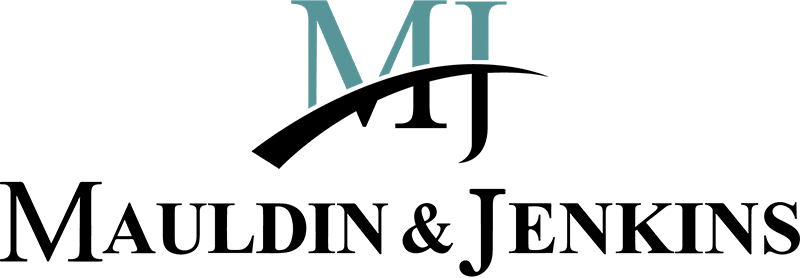By: Jon Schultz, CPA and Kimberly Haynes, CPA
Educational institutions have a clear mission: Provide the best education to students while maintaining a strong and sustainable organization. Educators, administrators, development specialists, and accounting professionals work hard to achieve this objective. But while they share a common goal, the various teams typically operate in silos that leave a disconnect between development and accounting, creating risk for schools and colleges. Bridging this gap can help mitigate risk and benefit the entire organization.
The chasm between accounting and development
If various departments in an educational institution were people, we’d say “Accounting is from Mars and Development is from Venus.” One is all about the numbers, and the other is almost entirely people-focused. But they’ve got to work together for the school to thrive, so what’s the problem? Why are they so far apart, anyway?
Departmental dynamics vary by institution, but similar themes usually underlie the abyss. It starts with a perception that development and accounting are unrelated—which couldn’t be further from the truth. Correct or not, many people see them as totally separate and may even view accounting as a secondary function.
Accounting also requires specific processes and follows clear rules—for accuracy as well as regulatory compliance. Those outside the department frequently lack an understanding of accounting processes. In addition, the rules and terminology that characterize accounting differ significantly from the language and policies common to most development teams.
Achieving seamless coordination is tough when you don’t play by the same rules or speak the same language, and that poses more than just a theoretical problem. It shows up in real-life issues such as:
- Accounting and development treating money differently (e.g., discrepancies between database software and accounting systems software)
- Divergent tracking of progress toward campaign goals
- Inaccurate reporting of unrelated business income (UBI)
- Procurement concerns around related parties or other potential issues
- Incorrect accounting and reporting around special event profitability
- Inconsistent or inaccurate communications with internal leaders, board members, donors, or external audiences
- Unclear distinction between tuition payment versus scholarship funds
- Signed agreements that accounting doesn’t know about
- Donor restrictions that violate internal policies or regulatory standards
- Inconsistently applied or problematic gift acceptance policies
Benefits of aligning separate functions
The all-too-common lack of coordination between accounting and development exposes schools to unnecessary risk—everything from damaged donor relations and less effective fundraising to tax reporting problems and potential fines.
Bridging the gap is important not just to prevent technical accounting issues, but also to support donor relationships and the wellbeing of the organization as a whole. It eliminates any unhealthy perception of “us” versus “them” that may exist within the institution and unites all departments around the common goal of advancing the school’s mission.
All teams share a collective responsibility for managing every gift and ensuring good donor relations. Being able to discuss their common challenges and transfer information freely helps each team become more proficient in their separate roles and allows consistent messaging to decision-makers. As an added bonus, keeping everyone on the same page increases your ability to tell a compelling story by sharing financial program outcomes through financial statements, IRS Form 990, and watchdog organizations.
Strategies to help bridge the gap
You can avoid problems and facilitate better outcomes by focusing on action strategies in three broad areas to increase coordination between accounting and development.
Improve Communications
Take every opportunity to increase the flow of information between departments:
- Encourage attendance at board and committee meetings.
- Require accounting and development to meet monthly or more often to discuss new initiatives, review solicitation materials and work through receipt of major gifts.
- Put together primers that outline accounting, fundraising and each of the institution’s programs.
- Explain the reasoning behind rules and policies. Clarifying the “why” can boost buy-in and increase cooperation.
Strengthen Collaboration
Establish a more effective partnership between accounting and development by:
- Making sure accounting and development understand the value of both functions.
- Underscoring the roles and responsibilities each department fulfills.
- Encouraging both departments to maintain a stance of “How can we make this happen?” rather than “No, we can’t do this.”
- Having the departments work closely together to:
-
- Formulate an effective gift acceptance policy.
- Create the school’s strategic plan.
- Establish key performance indicators.
- Draft the annual budget each year.
- Complete other collaborative projects as needed.
Integrate Systems
Integrating your accounting, fundraising and programmatic software should be the core focus of your technology strategy. Well-integrated systems boost financial and operational visibility, ensuring different teams see the same numbers. This is critical for accurate accounting and allows consistent messaging to all audiences.
- Choose technology solutions that interface with one another cleanly.
- Avoid cobbling together different systems that will require manual entry to keep them synced (different platforms are okay otherwise).
Consistent communication and process alignment between development and accounting is imperative for effective collaboration. And when these two departments figure out how to work together successfully in a true partnership, everyone benefits. Contact your Mauldin & Jenkins advisor for more ways to reduce risk and help your school thrive.



